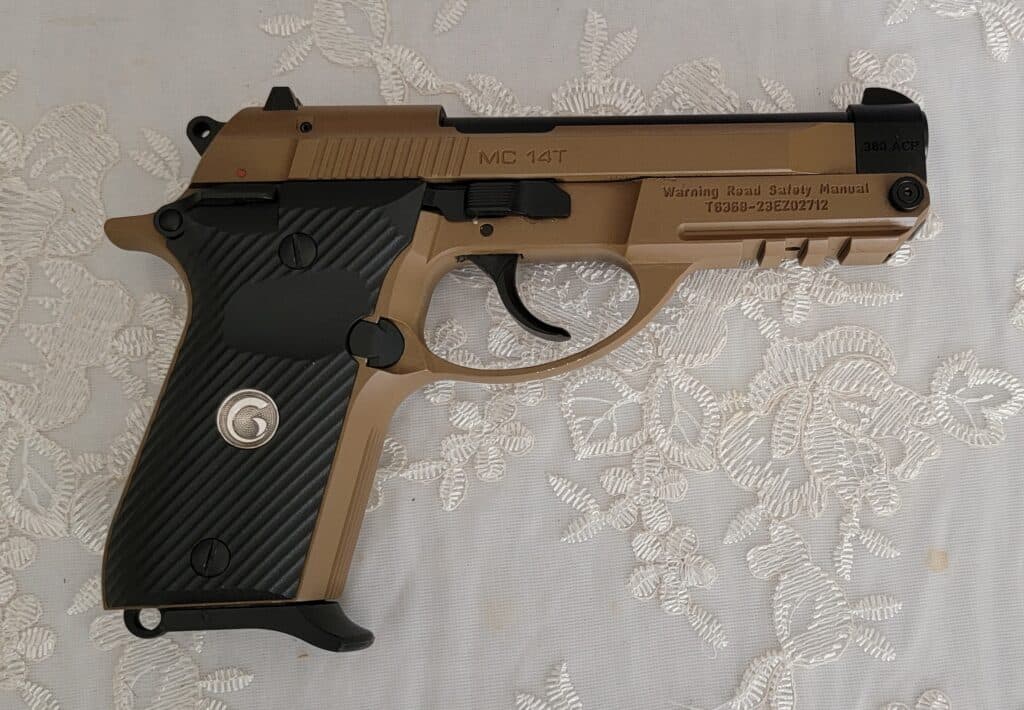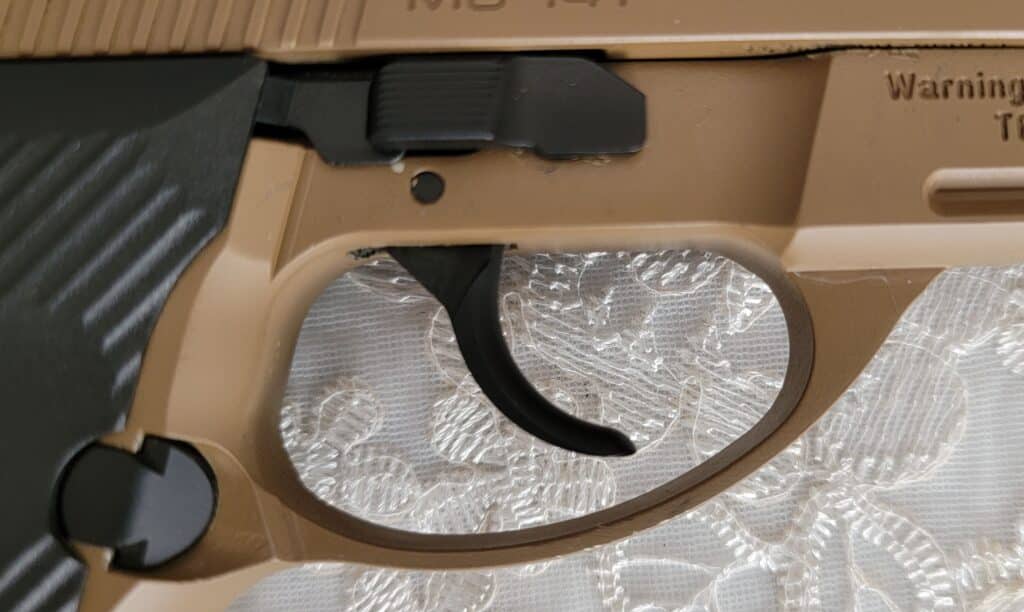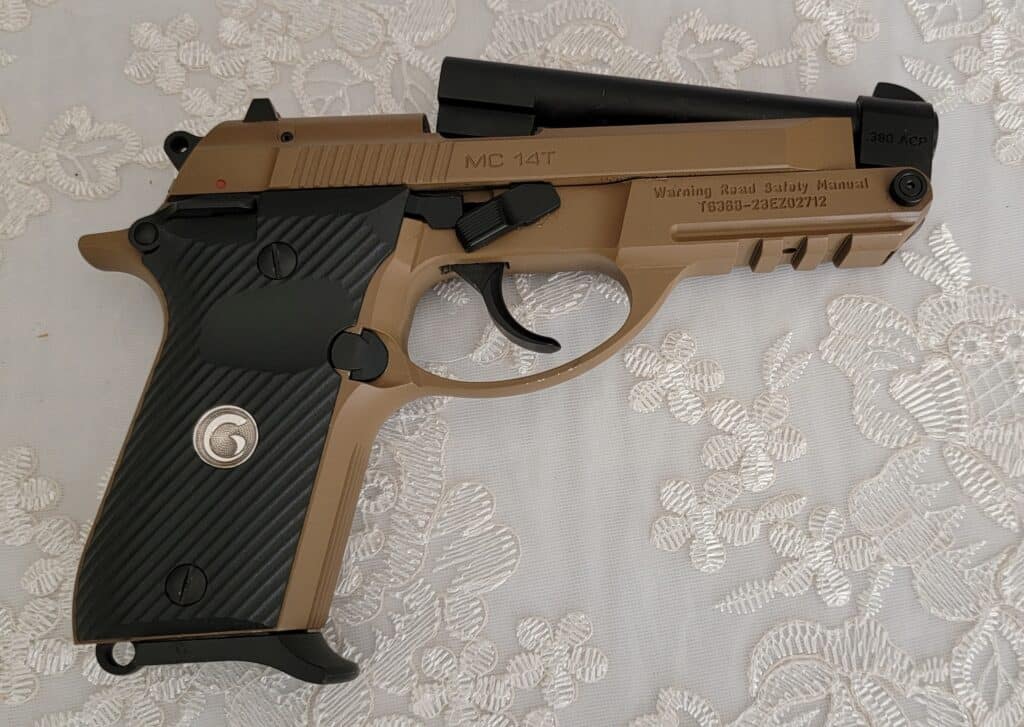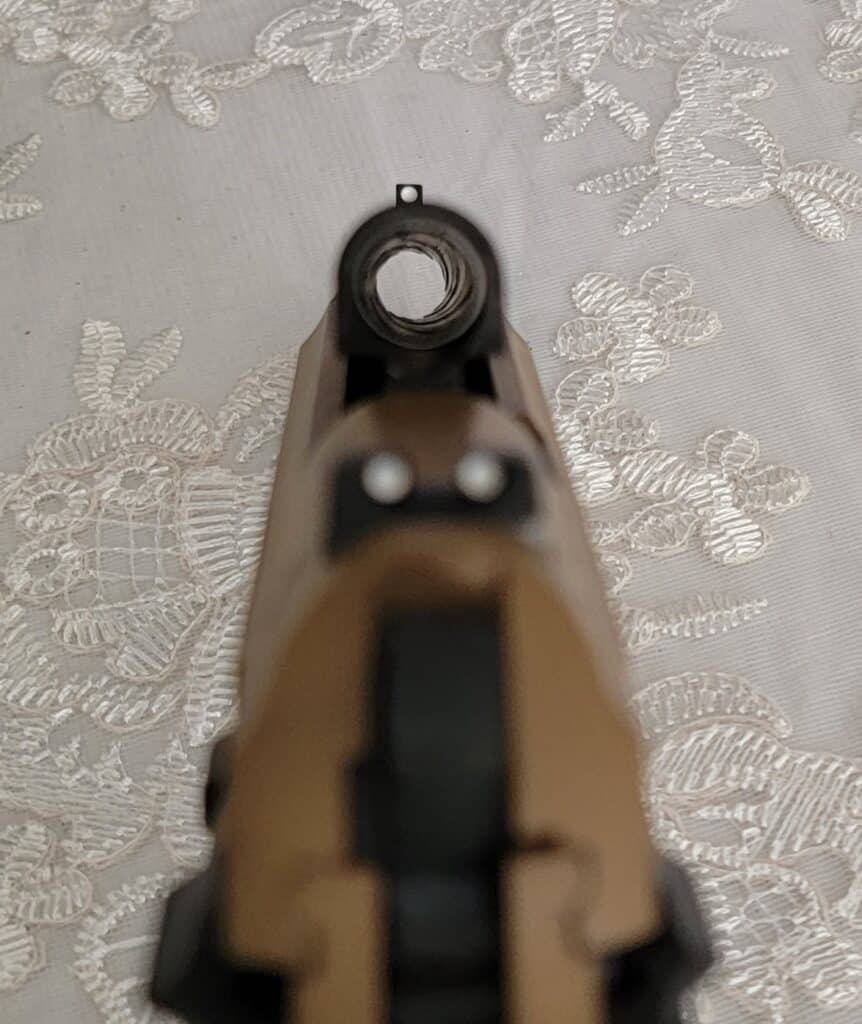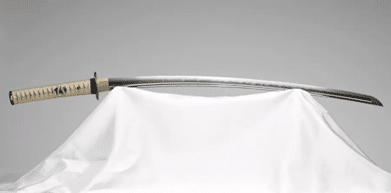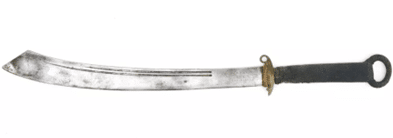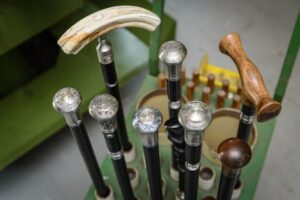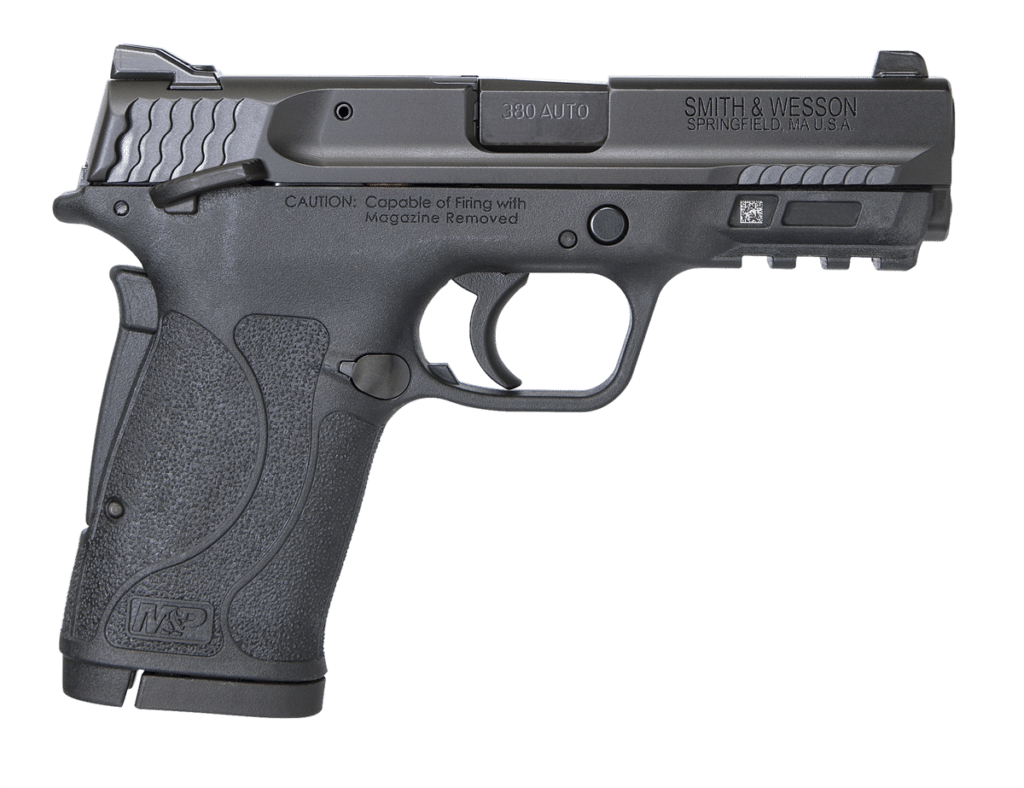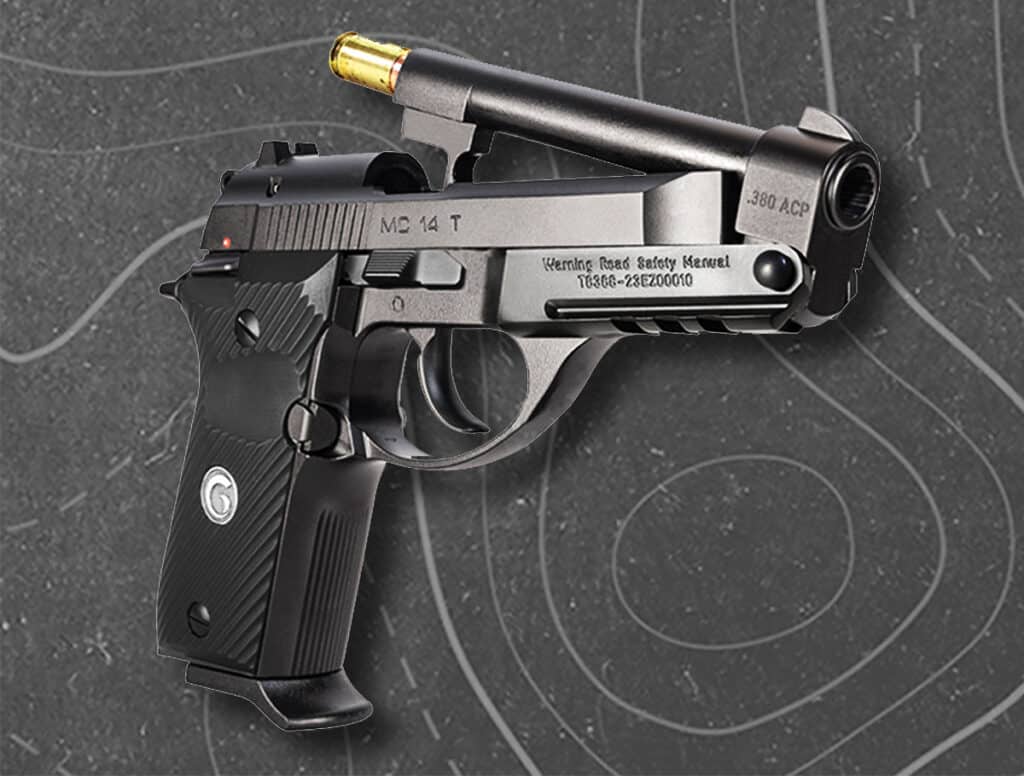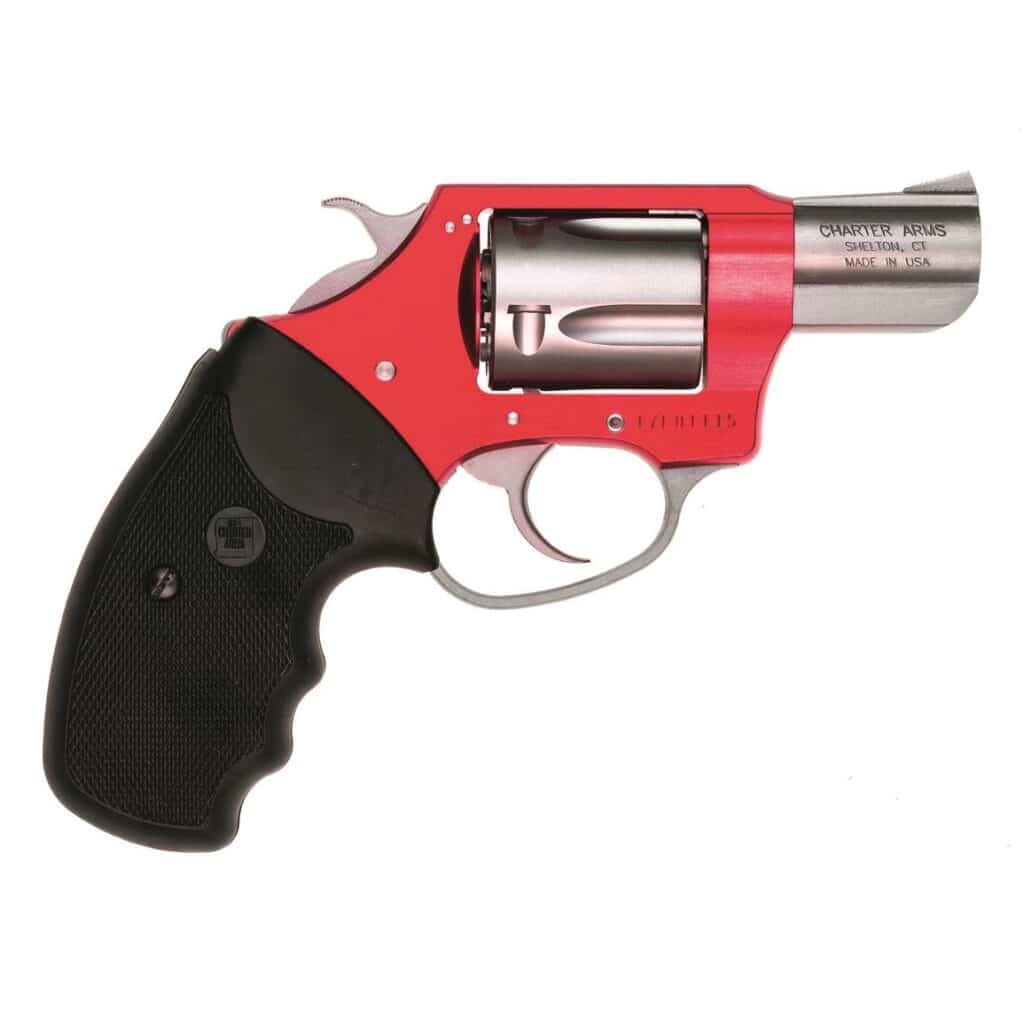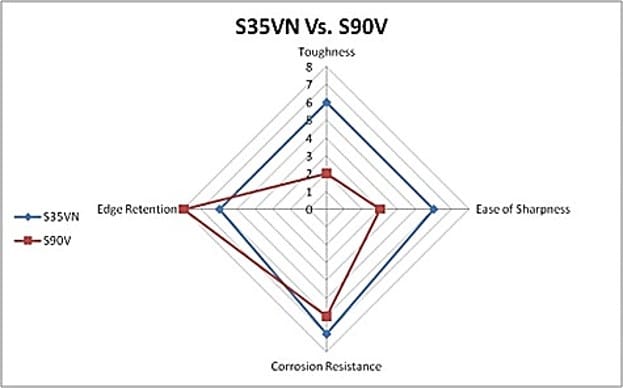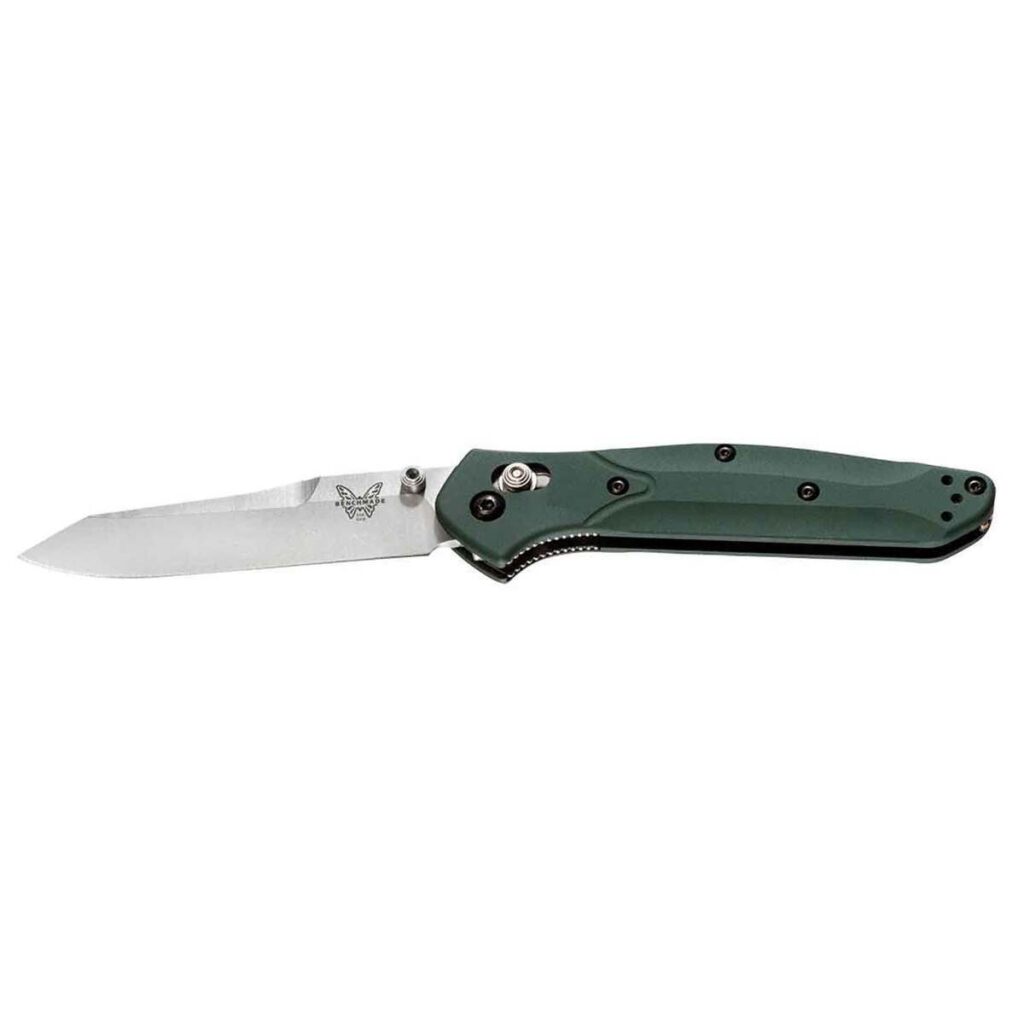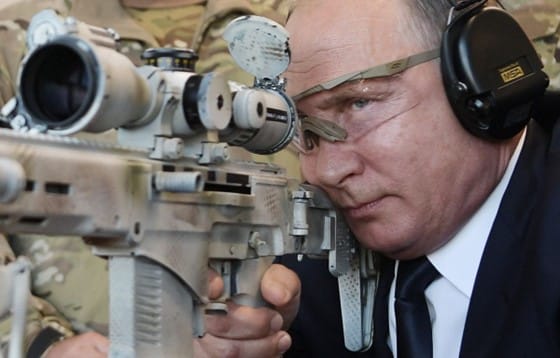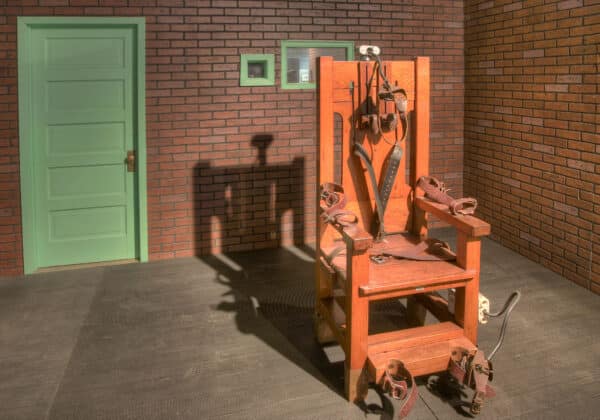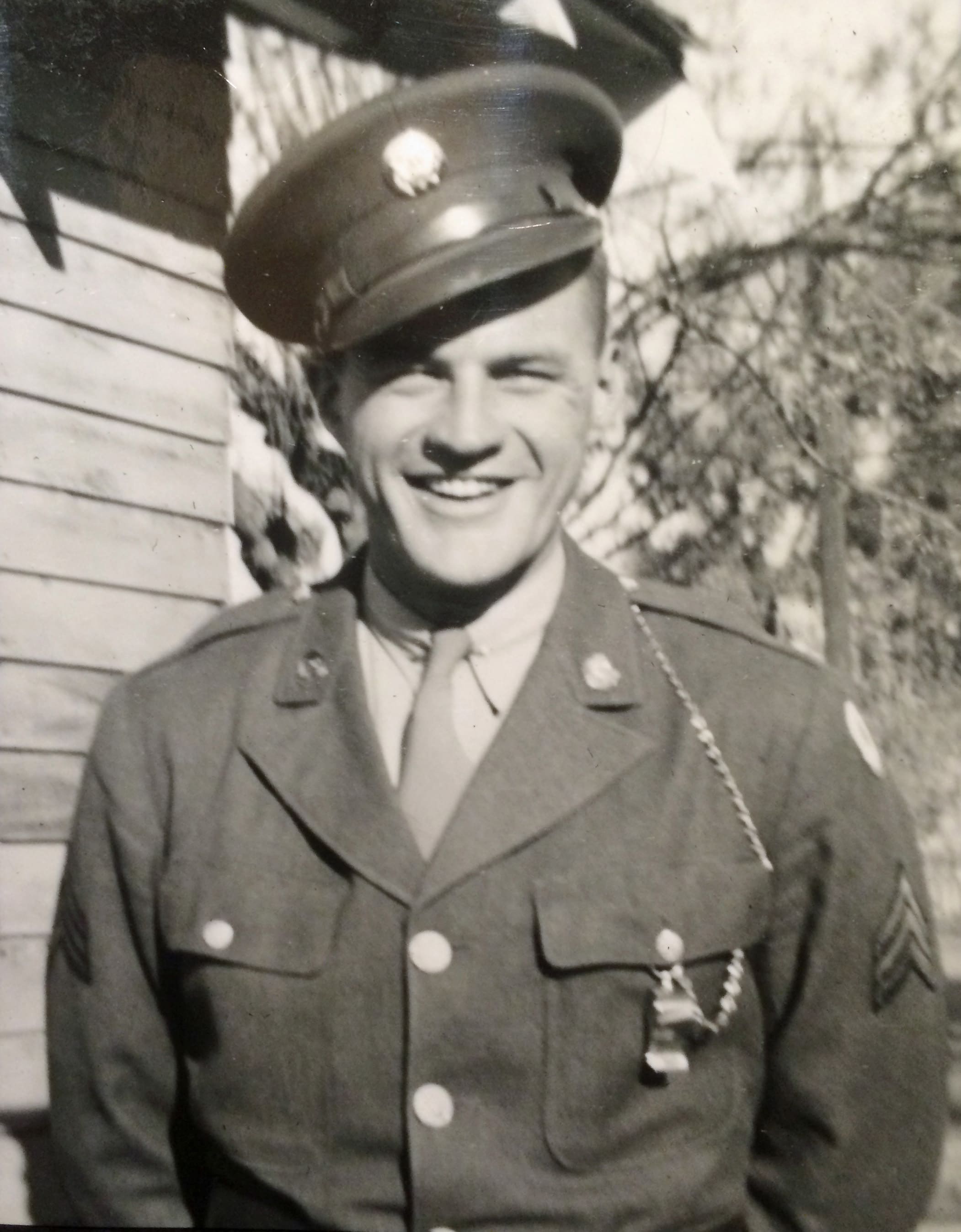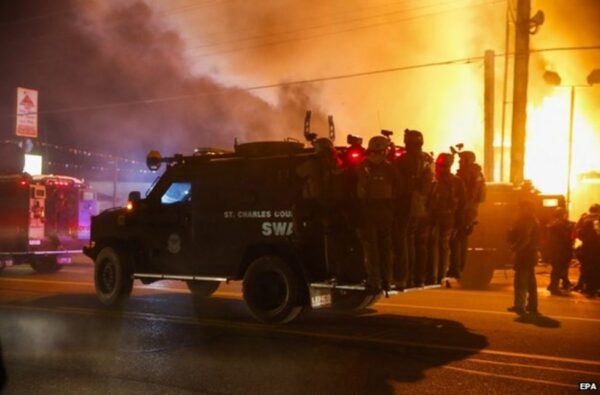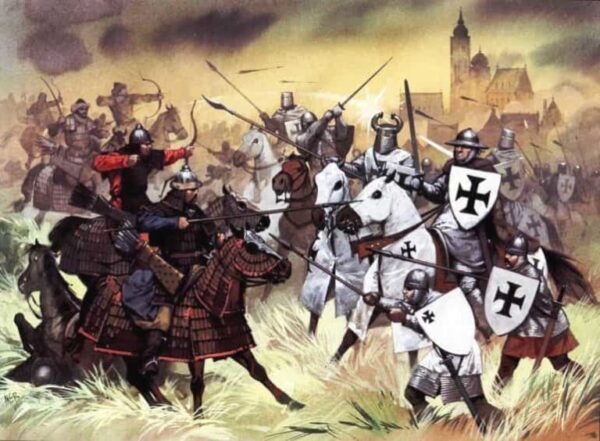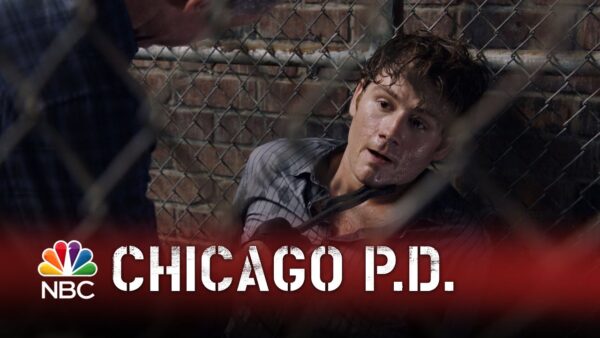Loading Them Up and Putting Them Out – The Walther WMP
Been shooting a new Walther WMP (Walther Magnum Pistol) a lot lately. It’s a .22 Magnum semi-auto, full-size, easy-to-shoot, lightweight, 15-round magazine capacity weapon; and since it is made by Walther headquartered in Ulm, Germany, you know it’s high quality.
Many weapons perhaps do one thing exceedingly well, and the WMP is no exception. And in this case, it’s this: the WMP can lay down a wall of suppressive fire. There are several reasons for this ability: large magazine capacity, minimal recoil of the .22 magnum cartridge, sensitivity of the trigger pull, the ergonomic fit of its full-size (more surface area to grip,) and it’s 46 ounces with a full 15-round magazine, so the weight and semi-auto action “eat up” some of the felt recoil – remember that is small anyway with a .22 magnum – so you can keep the weapon on target and rapidly fire again, and again, and again.
To put down a base of fire, the weapon has to fire reliably, and sometimes rimfire cartridges do not, even when struck by the firing pin. They can also be finicky cycling in semi-automatic weapons. Walter understands this and has tested probably every make of .22 magnum ammunition, along with their various muzzle velocities, and bullet grain weight – in this case weights of between 30 grain and 50 grain. With every new weapon (and online at their website) they include a list of several dozen different .22 magnum rounds and rate them as follows: “works OK,” “works well,” “works very well,” “works best,” and the two dreaded categories “inconsistent,” and “not recommended.”
Every individual firearm has a unique ability to fire some rounds more reliably and more accurately than other rounds. Some of that ability is driven by the ammunition, but there are often other factors. How do you hold the firearm? How do you squeeze the trigger? How often do you clean the weapon? When you do clean it, how thorough is that process? How much lubricant do you keep on the weapon? With semi-autos, how much detail do you spend loading the magazine with rounds? And last, I believe that almost every weapon has its own tiny variations making it unique. Some come during the manufacturing process, but others include how many rounds have already been fired through it in its operational life, and how rough it has been handled, so maybe it is tighter or looser than even the next firearm originally made on the assembly line years ago.
Walther understands all that, and they probably fired more rounds of every type of ammunition through the prototypes to finished products than you or I could ever fire in a lifetime of shooting. And yet, some reviewers – who may or may not know what they are doing, what their motivation is, or even if they are on the payroll of a competitor, fire some number rounds (under conditions that the reader does not fully know) and proclaim that a weapon is not reliable. If the manufacturer tells you that ammunition Type A is “inconsistent,” or “not recommended,” believe them.
For the particular Walther I have shot, the most reliable rounds have been (first) Hornady Critical Defense .22 WMR, 45 grain FTX (classified by Walther as “works very well”) and (second) Federal Small Game 50 grain JHP (which Walther says works well.) Probably have put a couple hundred rounds of each through it, with no failures, no jams, didn’t fire, didn’t chamber. There are a couple of types of ammunition that Walther rates even higher: Fiocchi, Shooting Dynamics, 40 grain, JHP; and CCI MaxiMag 40 grain JHP and MaxiMag 40 grain Target.
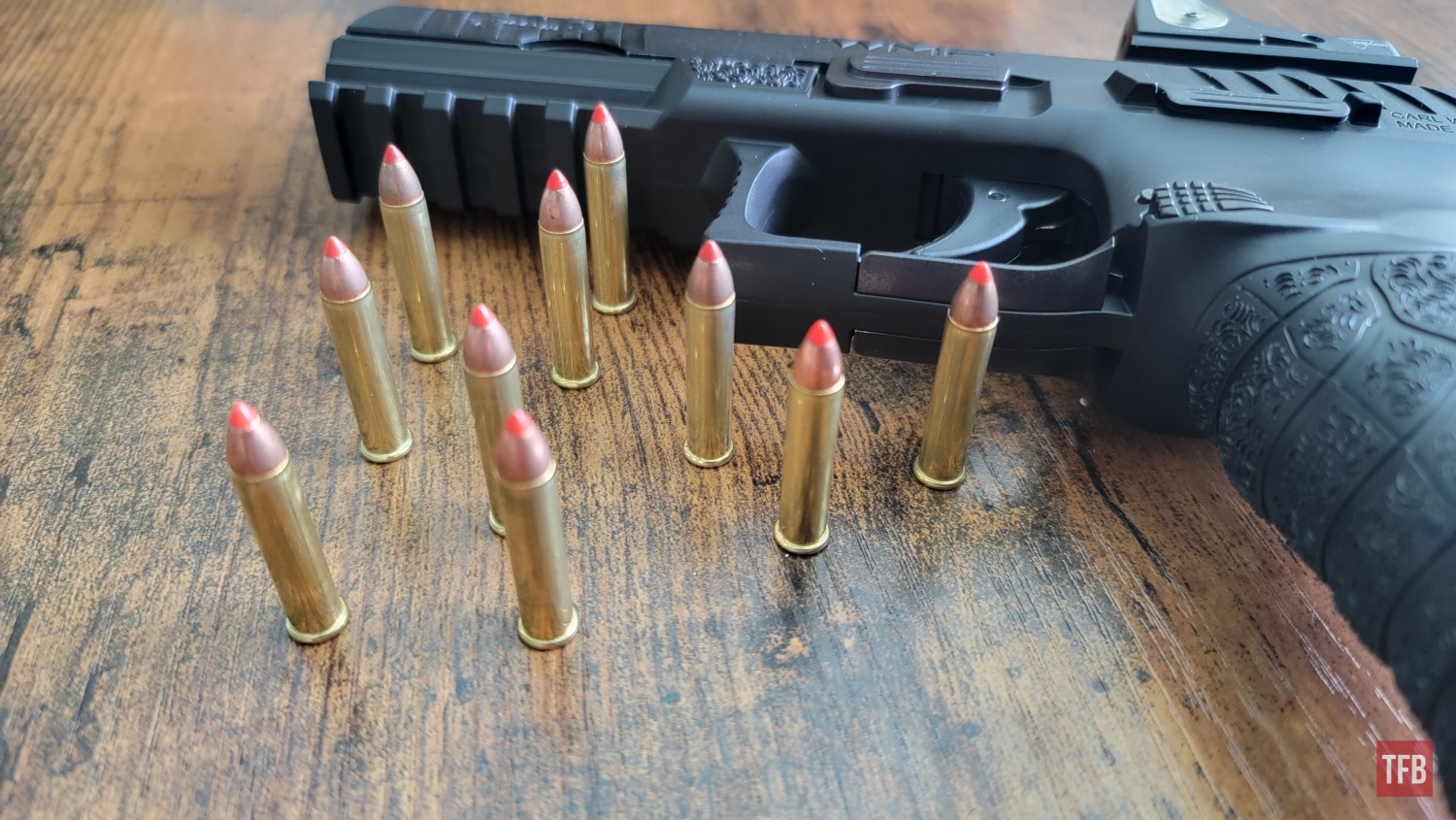
Why would someone even consider suppressive fire as an attribute for a civilian firearm? Certainly that is a good quality for a military small arm – and even artillery fire is used to suppress targets – but what circumstances in a civilian environment would require that? First, rule out a zombie attack; that makes for great TV and movies. And, if zombies ever do attack, looks to me like you have to blow their heads off with well-aimed shots, as they don’t worry about being suppressed!
Let’s examine two environments present in non-military events in which you might find yourself. Out in the wild, you might be treated to an unplanned encounter with a few feral dogs, wild pigs with babies, something that might be rabid running at you – in short, unprovoked, quick-developing, potentially deadly, shocking situations where your goal is to get out of there by deterring the pack and getting to your car PDQ (pretty damn quick.) You aren’t concerned about humane kills; this isn’t hunting, but self-defense. Granted, a single .22 magnum round probably won’t drop porky or a rapid dog. But fifteen “hornets” stinging everything they hit, coming from something spitting flame out the front presents the animal with its own decision to avoid more pain and leave PDQ. And since Walther gives you an additional 15-round magazine, the hornets have more buddies.
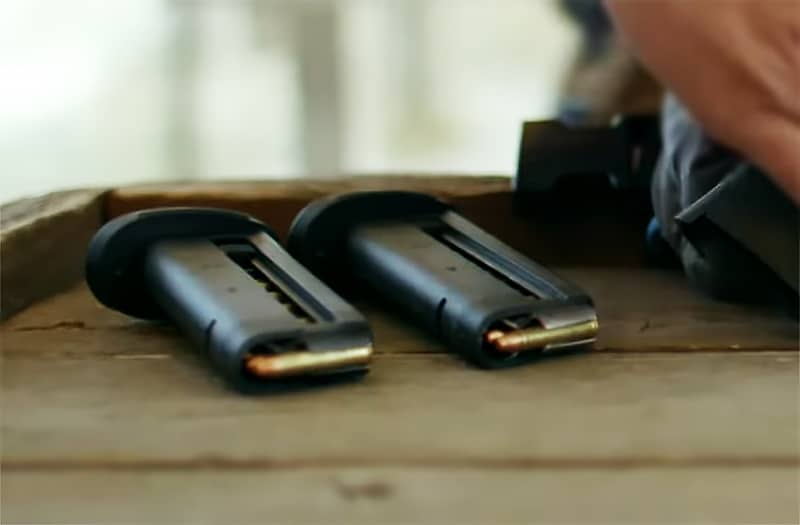
Now for the two-legged threats, and here it gets more complicated. First, let me get a personnel peccadillo off my chest. In the over fifty years researching various military armies, and participating in two wars (not as a hero mind you) I believe that most human beings will not attack you in kamikaze-style attacks, or drug-fueled charges, where they feel no pain and keep coming after multiple rounds hit them. Bullet wounds hurt. Few things control human behavior like pain. If the aggressor is hurt badly enough he or she will usually stop. The reason that kamikazes in the Pacific were effective to the degree they were is that they went against almost all previous military tactics and thus gained surprise, which gave the Japanese a temporary psychological edge, until the US figured out how to combat them. Even the vaunted Waffen-SS hunkered down at Kursk under heavy Russian fire, and those boys were as fanatical as they get.
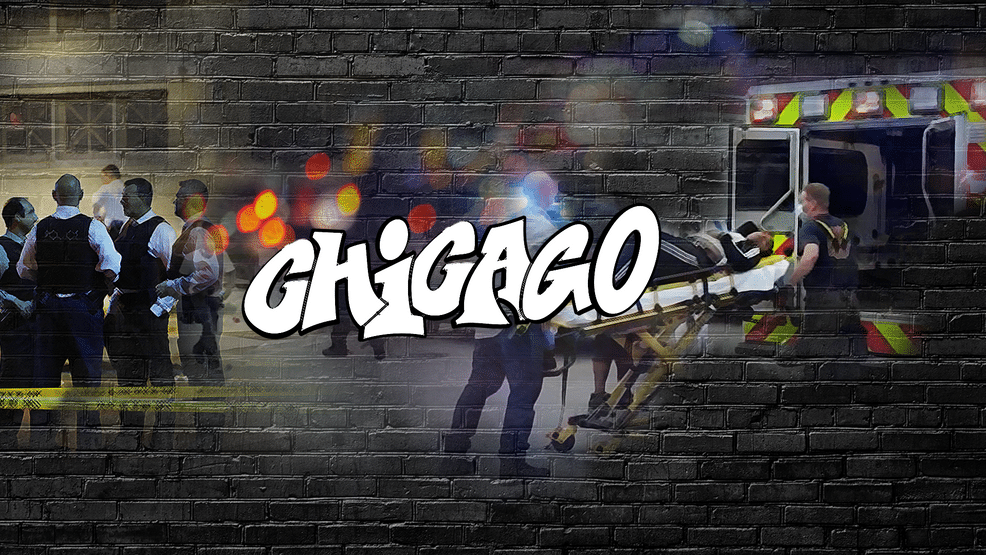
“Combat in cities” is what thousands of Americans face every day across the country. Chicago, Detroit and St Louis all seem to be vying for the worst murder rates in the country year after year. What do we know about urban killings? Many are gang-related, conducted by dangerous, but tactically inept marksmen and cowards who go after those who cannot defend themselves – often children and senior citizens. They beat women smaller than they are. These killers are not brave, and certainly not willing to die for the honor of the gang. They are not going to charge you while their homies are dropping around them. They are frequently alcohol or drug impaired.
Their biggest tactical asset is that they are familiar with the terrain in which they prey like hyenas, but like hyenas, they run from lions, whom they call pigs, the police who fight back. Their other characteristic is that they have intimidated their peaceful neighbors into remaining silent; snitches get stitches. Often it is more than stitches. His own gang, the Black Disciples, killed eleven-year-old Robert “Yummy” Sandifer because it feared he might become a police informant.

“Yummy” Sandifer’s grave
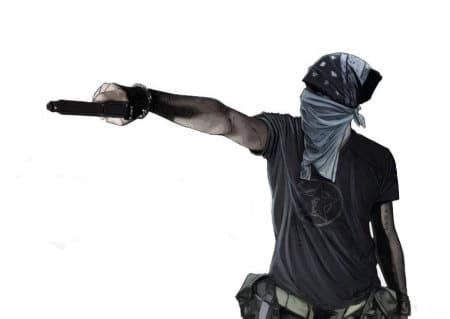
“Gangstas” (street gangs, often known as nations,) often use a pistol sideways just because in their world it looks cool. They usually don’t worry about holsters in concealment; they often shove their pieces in their coats or pants pockets, or pull their pants up and “Mexican carry” (carry in the front or back without a holster).
So what can you do? Most effectively, stay out of danger zones. Each individual gang is divided into sets which are territories spanning blocks or neighborhoods that may be divided further into subsets. The police in every city and town will tell you what areas to avoid. If you live in a bad one, try and do whatever it takes to move out, and never come back. If you do not live there, there is no reason for you to take a chance and visit. Do not, sightsee, shop, dine, or do any other voluntary activity. Do not drive through them; they are the home of stray shots that may never have been targeted at you, but you were there at the wrong place at the wrong time. Concerning your profession, refuse to work in these areas, or even drive a delivery truck into them, but rather seek employment in safer areas. This isn’t an issue of race. Violent criminals come in every stripe, color, gender and every other characteristic.
If you must reside or work in these areas, you need to be armed, and maybe the characteristics of the Walther WMP may be right for your situation, although it is a bit large for easy concealed carry on your body. You do not want to kill one of these punks, even though in the scheme of life they are pretty worthless. You just want to wound your attacker and cause him to flee, which may be 3-4 attackers, all of whom may be armed. Hitting an attacker with a .44 magnum, .357 magnum, 10mm, or other big “manstopper” round is probably going to kill him if you hit him with a round center of his chest, which is what you train to do (Remember, head shots are for Hollywood.)
With the WMP’s barrel length, Hornady Critical Defense .22 WMR, 45 grain FTX will penetrate a human 13-14 inches, as tested by the FBI, and often expand to .40 inches. That means that many rounds will not penetrate all the way through the bad guy, which translates to a lower probability that someone behind them, and thus not involved, will be hit.
But a couple of .22 magnums in the arm and maybe 1-2 in the leg? His attack on you is very likely over, and the police have better things to do then find out which gang-banger shot another gang-banger, especially if no one gets killed. Cook County, Illinois, States Attorney Kim Foxx has even refused to bring charges over shootings involving “mutual combat” arguments – even when one person was killed! These gang members are not going to go to the police and admit that they were trying to rob someone, and got shot in the process. That makes them look weak; and weak street gang members are often eliminated by their own bosses, because there’s no real retirement plan.
Suppressive fire may be just the key, especially in situations where it is unlikely that there are innocent bystanders who might be hit by your fire. But if you practice, something the gangs in Illinois cannot truly do, because they have criminal records and cannot own a firearm legally, or buy ammo, or visit a range, you can control the situation, not just fire wildly, but a controlled suppression fire that can turn the tables on them. They are not well-versed to determine what type of weapon they are facing. Hearing multiple shots fired leads many people to believe they are facing multiple opponents. They are not seeking that.
But remember; you cannot talk your way out of many, if not most, attacks. Your attackers do not care about you. You are prey. Unless you are a rival gang member, they may have nothing against you. You might even just be an initiation target that a new gang member has to kill to get full membership in the gang. And ditch that sentimental gentleman in you if you are male; a recent study found that in Chicago, 8 percent of female students reported they were in a gang at some point between sixth and tenth grades, compared with 13 percent of boys. In either case, if they are trying to hurt you, you are in danger of losing your life, so turn the hornets loose on them.
